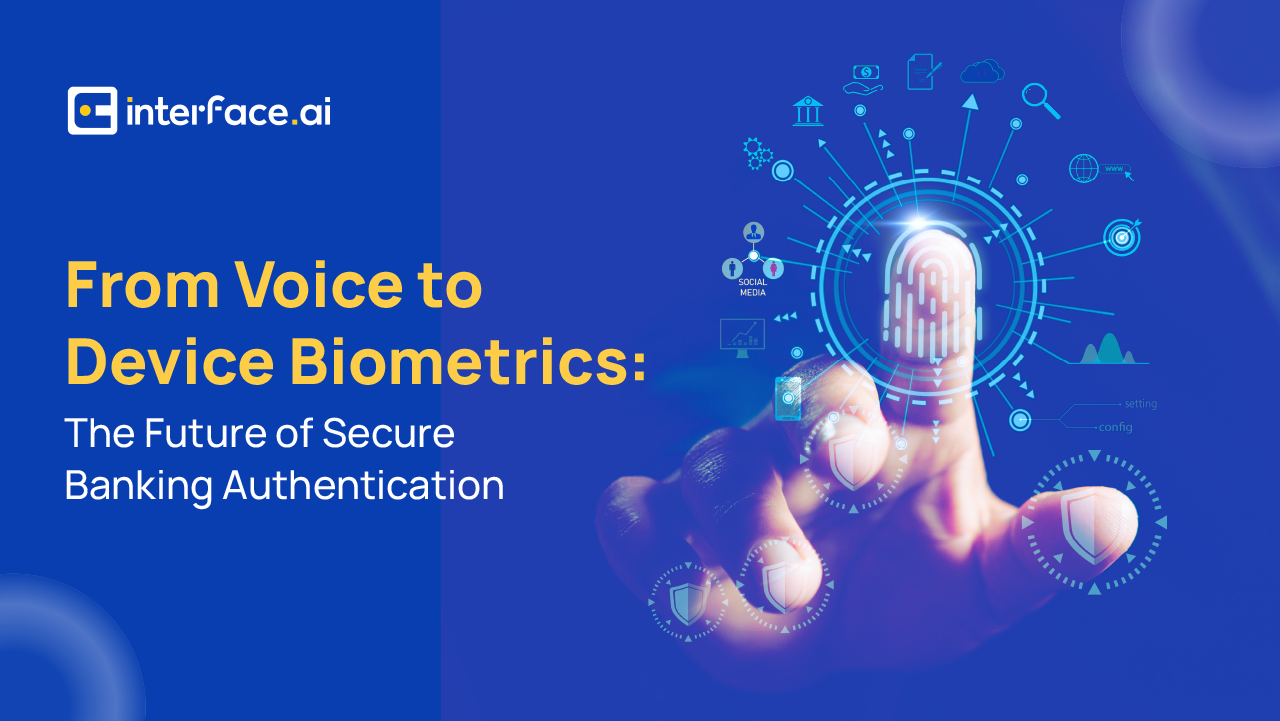
From Voice to Device Biometrics: The Future of Secure Banking Authentication
“A thing that terrifies me is apparently there are still some financial institutions that will accept the voiceprint as authentication… That is a crazy thing to still be doing. AI has fully defeated that.” – Sam Altman, OpenAI CEO, July 2025
In an era where AI is reshaping every facet of technology, one area facing an unprecedented identity crisis is voice authentication.
Once celebrated for its convenience and security, voice-based authentication is now being rapidly outpaced by the rise of deepfake technology and synthetic voice cloning. Financial institutions that once relied on a few spoken words to validate identity are now discovering that those very words can be easily mimicked, manipulated, and misused.
As generative AI becomes increasingly sophisticated, the threat landscape has shifted, exploiting the human voice as a weak link, rather than a trusted credential. The question is no longer whether voice authentication is secure, but whether it is even viable in the age of AI.
The rising threat of deepfakes in financial services
Over the past two years, deepfake fraud has evolved from a fringe threat into a mainstream crisis. According to PwC, fraudsters are exploiting voice biometric authentication and impersonation tactics to bypass security controls in real time financial operations.
In April 2025, Hong Kong police dismantled a deepfake scam ring that used AI-generated video and cloned voice attacks to open accounts at HSBC, causing losses exceeding HK $1.5 billion (approximately US $193.2 million)
Modern fraud networks can perform AI voice cloning using just seconds of audio, making traditional voice verification systems highly vulnerable. 91 percent of U.S. banks are now rethinking voice biometric authentication due to AI cloning risks, according to a survey by BioCatch. When paired with phishing or real time manipulation, deepfake audio can easily breach even multi factor authentication setups.
Even worse, this form of attack is now scalable. Cybercriminals are automating identity fraud using pre-built AI models and targeting hundreds of financial institutions simultaneously. As the cost of generating convincing fake audio continues to decrease, even smaller credit unions and regional banks are finding themselves in the crosshairs. According to recent cybersecurity briefings, deepfake scams rose over 1000 percent in Hong Kong in just one year, and global trends are showing similar spikes.
Why voice authentication is becoming obsolete
Voice authentication, once considered innovative, now suffers from critical weaknesses when used alone:
- Spoofability: Voiceprints can now be cloned with near perfect fidelity
- Rich source material: Public audio like podcasts and interviews are easily scraped for cloning
- Poor liveness detection: Many systems cannot distinguish between a real voice and synthetic audio
- High friction and false positives: Voice based systems burden operations and frustrate users
According to the 2024 Javelin Identity Fraud Study, American consumers lost more than US $47 billion to identity fraud in 2024 – an increase of US $4 billion from the previous year. Much of this was driven by AI-generated synthetic identity fraud and voice cloning.
Voice authentication may still play a role in multi factor environments, but on its own, it can no longer meet the security demands of modern digital banking. The margin of error is too wide and the cost of a single breach is too high.
Device Biometrics: The secure alternative from interface.ai
To overcome the growing threat of synthetic voice impersonation, interface.ai launched device biometric authentication. This technology ties user identity to their personal device using secure hardware such as fingerprint sensors or Face ID, offering a high assurance and frictionless user experience.
Unlike voice systems that can be bypassed with cloned audio, device-based biometrics leverage encrypted identifiers built into the device itself, such as the Secure Enclave in Apple hardware or Android’s Trusted Execution Environment. These technologies are designed to resist tampering and cannot be spoofed, making them highly secure and practical for banking applications.
Key benefits of device biometric authentication
- Immune to remote deepfake and voice cloning attacks
- Verifies users silently in the background with zero friction
- Anchored in secure device hardware, not vulnerable cloud stores
- Combines biometrics with real-time AI risk signals
- Reduces fraud, call center load, and authentication drop-offs
- Fully compliant with global data privacy regulations
How device biometric authenitication works
- Users enroll via their mobile banking app using fingerprint or facial recognition
- When a session begins, the system silently verifies the device fingerprint
- Device biometric authentication confirms identity without user action
- AI evaluates risk signals including voice anomalies, location, and behavior
- Sessions continue securely or escalate for verification if risk is detected
This approach offers the best of both worlds: seamless customer experience with robust protection. Customers feel no friction while banks ensure that only authorized users gain access to sensitive service
Recommendations for financial institutions
As synthetic identity fraud escalates and voice-based authentication becomes increasingly vulnerable, financial institutions must rethink their approach to identity verification. Here’s how to move forward with a security strategy built for the age of AI
1. Phase out voice-based authentication and legacy biometrics
Retire outdated systems that rely on easily spoofed credentials like voiceprints or static facial data. These methods can no longer stand up to deepfake and AI-driven attacks.
2. Adopt multi-signal, AI-powered authentication frameworks
Modern identity verification should combine multiple risk signals – including device biometrics, behavioral analysis, geolocation and historical patterns – for layered, intelligent defense.
3. Educate customers on how device biometrics protect their identity
Help users understand why device-level authentication is safer, faster, and more private. Transparency builds trust – especially when introducing a behind-the-scenes technology shift.
4. Monitor emerging threats using behavioral and device intelligence
Stay ahead of evolving attack vectors by continuously analyzing how users interact with your systems. Flag anomalies like unusual device usage, location mismatches, or timing patterns.
5. Prioritize silent, low-friction authentication experiences
Adopt authentication methods that run in the background and don’t interrupt the user journey. When security is invisible but effective, customer satisfaction and safety improve together.
Wrap-up
Voice authentication was once a step forward in security, but in the age of AI it has become a serious liability. Voiceprints can now be cloned with ease, exposing financial institutions to reputational harm and fraud loss.
Device biometric authentication from interface.ai is the future. It offers silent, secure, and fraud resistant verification tied directly to a customer’s trusted device. For banks and credit unions seeking to safeguard trust and enable digital growth, this technology provides the answer.
Learn more about interface.ai’s Device Biometric Authentication solution.
AI Insights for Credit Union & Community Bank Leaders
Join the monthly newsletter for all the latest industry updates

